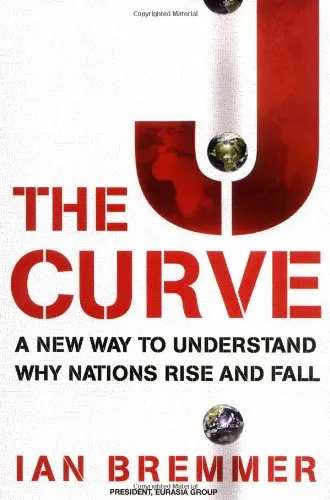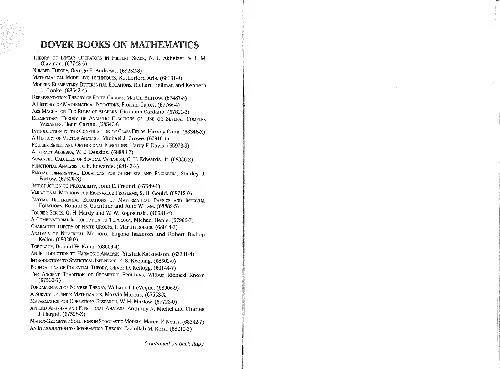The J Curve: A New Way to Understand Why Nations Rise and Fall
4.4
Reviews from our users

You Can Ask your questions from this book's AI after Login
Each download or ask from book AI costs 2 points. To earn more free points, please visit the Points Guide Page and complete some valuable actions.Related Refrences:
Introduction to 'The J Curve: A New Way to Understand Why Nations Rise and Fall'
Written by Ian Bremmer, "The J Curve" is a groundbreaking exploration of how nations evolve politically, socially, and economically. This book introduces a powerful framework that explains why some countries successfully establish stability and prosperity, while others struggle with unrest and chaos. The central concept, the J Curve, visualizes a transformative relationship between stability and openness, helping readers decode the complex trajectories of countries as they navigate global challenges.
Using real-world examples and incisive analysis, Ian Bremmer illustrates this curve to highlight the paradox that as nations open up politically and economically, they can become temporarily less stable before transitioning to long-term stability and growth. It's a thought-provoking examination of the balance between authoritarianism and democracy, and how leaders, policies, and cultural factors drive these shifts.
Detailed Summary of the Book
The key premise of "The J Curve" is to chart how nations evolve along two axes: openness and stability. When plotted on a graph, this interaction forms the shape of a "J." At one end of the curve lie closed, authoritarian states, which are stable due to limited openness. At the other end are open societies that achieve stability through democratic governance and strong institutions. However, the transition from closed to open systems often leads to instability as societies face internal and external pressures.
The book offers an in-depth look at multiple countries, including North Korea, Cuba, Saudi Arabia, China, and the United States, as case studies to illustrate this concept. Bremmer explains why nations such as North Korea, while highly closed and authoritarian, maintain internal stability. Conversely, countries in transition, such as Russia and Iran, experience upheaval due to various social, economic, and geopolitical forces.
At the far right of the curve, successful democracies like the United States or EU countries are examples of stable, open systems. However, even these systems are not immune to shocks, whether economic crises, political polarization, or global disruptions. The book underscores that no nation is static and that movement along the J Curve is inevitable, though fraught with challenges.
Bremmer also delves into practical strategies for policymakers and leaders, urging them to recognize transitional pain points while balancing internal reform and external engagement. By doing so, they can guide their nations toward the more stable side of the curve.
Key Takeaways
- The J Curve explains the trade-off between stability and openness, showing how transitions between authoritarianism and democracy inherently involve instability.
- Closed societies can remain stable but lack resilience and flexibility in the face of economic or political disruptions.
- For nations in transition, the path to openness is marked by volatility and requires robust leadership and institutional development.
- Open and democratic societies, while generally more stable, face increasing challenges, such as inequality and political fragmentation.
- Policymakers must recognize that reforming nations require careful internal adjustments and external partnerships to navigate transitional crises.
Famous Quotes from the Book
"Stability and openness often pull societies in opposite directions, but it’s the balance between the two that defines a nation's trajectory."
"The challenges of transition are as much about leadership as they are about the inherent dynamics of reform."
"No nation can remain entirely fixed in place; the forces of globalization will eventually push even the most closed societies to adapt."
Why This Book Matters
"The J Curve" is more than a book about geopolitics—it’s a diagnostic tool for understanding the rise and fall of nations. At a time of increasing global uncertainty, the book provides a robust analytical lens to assess why nations succeed or fail in achieving long-lasting stability. It challenges traditional notions of governance by illustrating the inevitable instability all societies face as they attempt to transition toward openness.
The insights offered by Bremmer are particularly relevant in an interconnected world, where global trends such as economic integration, technological disruption, and social movements amplify the pressures on national governments. "The J Curve" equips readers—whether scholars, policymakers, or curious professionals—with the tools to think critically about why some countries thrive under the pressures of modernization while others collapse into cycles of instability.
By marrying theory with real-world examples, Ian Bremmer ensures that "The J Curve" remains an essential read for anyone seeking to better understand international affairs, nation-building, and global governance in the 21st century.
Free Direct Download
You Can Download this book after Login
Accessing books through legal platforms and public libraries not only supports the rights of authors and publishers but also contributes to the sustainability of reading culture. Before downloading, please take a moment to consider these options.
Find this book on other platforms:
WorldCat helps you find books in libraries worldwide.
See ratings, reviews, and discussions on Goodreads.
Find and buy rare or used books on AbeBooks.
1349
بازدید4.4
امتیاز0
نظر98%
رضایتReviews:
4.4
Based on 0 users review
Questions & Answers
Ask questions about this book or help others by answering
No questions yet. Be the first to ask!













